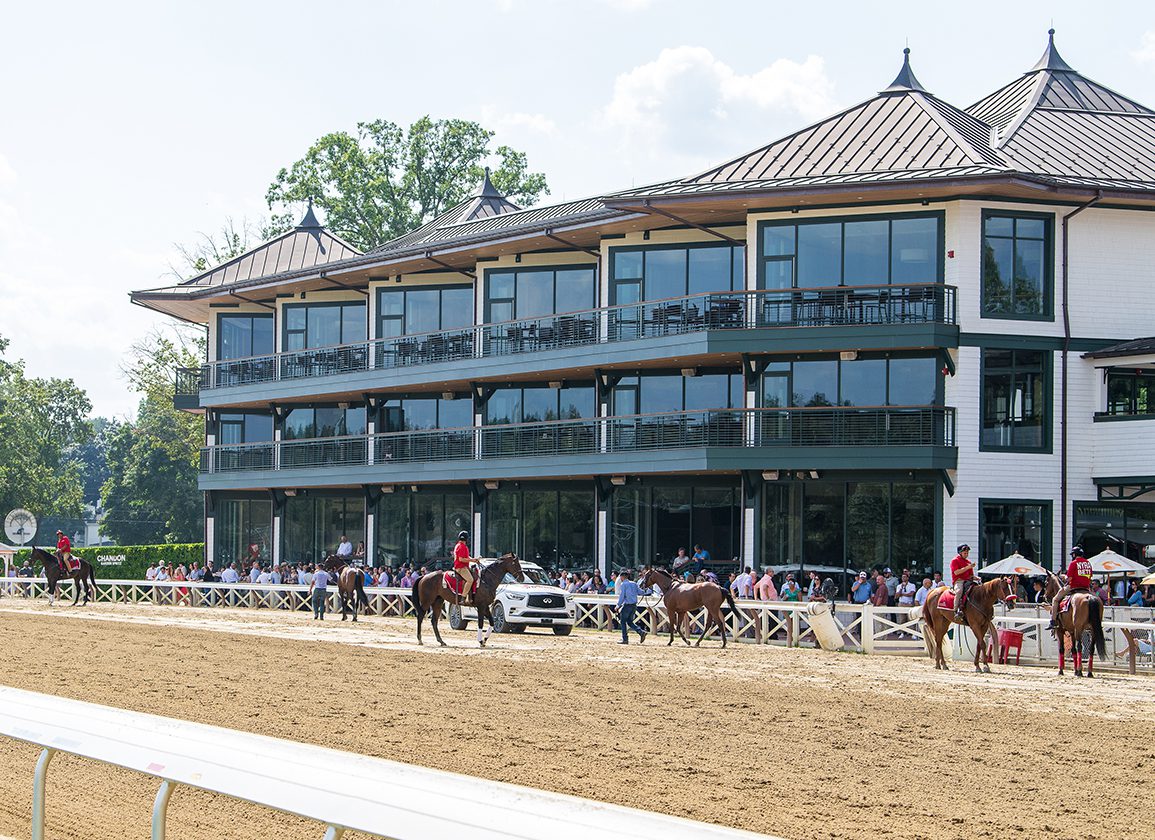Following the controversial disqualification of Brick Ambush (Laoban), who crossed the wire second in Saturday's $500,000 Great White Way division of the New York Stallion Series at Aqueduct, owner Dean Reeves said he will appeal the decision of the stewards.
In a roughly run race, there was an incident at the quarter-pole where Big Torpedo (Big Brown) and Solo's Fury (Solomini) both checked sharply. Big Torpedo finished fourth and Solo's Fury was last of 12. A strong case can be made that Antonio of Venice (Laoban), the race winner with Manny Franco aboard, came off the rail and started a chain reaction that caused the other two horses to steady. When the incident took place, Brick Ambush sat five wide and outside of the horses who were bothered. He never came in contact with another horse, changed paths or did anything else that would seem to warrant a disqualification.
Another possibility is that the stewards mistook Brick Ambush for the 11 horse, Solo's Fury, who does appear to come over and bother horses at the quarter pole, while Brick Ambush appears to be clear of the trouble at that point. Both jockeys were wearing white and green silks with green caps and were next to one another.
Second-place money in the Great White Way is $100,000. Brick Ambush was placed last.
“We are going to appeal it because I'm not really sure what happened,” Reeves said. “We were never involved in the conversation. It's been amazing, the number of people who have reached out or are making comments, people saying that's the worst thing they've ever seen in 40 years of watching races. I feel like I got robbed, like I got mugged. We have to appeal this. I want to see how they came to their conclusion that we had anything to do with it. I watched the slow motion and had it stop and start. I have some questions for them.”
Reeves said he did not even realize that his horse had been taken down until getting a call from his trainer, Danny Gargan. He then called the stewards, asking for an explanation
“I called to talk to the stewards,” he said. “I wanted to ask them why they took my horse down. I called three times. They hung up on me the first two times. The third time they said call us tomorrow morning. Needless to say, I was pretty upset.”
The Daily Racing Form's David Grening asked New York Gaming Commission steward Braulio Baeza Jr. to comment on the reason for the disqualification and was told “the outside horse [Brick Ambush] caused the pressure.” Grening wrote that the stewards declined to comment further.
According to reporting in the Daily Racing Form, a second owner has filed an appeal objecting to the stewards' decisions. Thomas Albrecht, the managing partner of the group that owns Big Torpedo, has filed an appeal of the stewards decision not to disqualify Antonio of Venice from first place.
A stewards' inquiry was posted shortly after the horses crossed the wire. Javier Castellano, who rode Big Torpedo told reporters that he claimed foul, but the stewards said that foul claim was never relayed to them. It took the stewards about 10 minutes to review the inquiry, but even after they reached their decision there was more cause for confusion. For about a minute after the inquiry sign was removed, the order of finish still read 1-12-3-7, which was the order the horses crossed the finish line. The numbers were then changed to 1-3-7-6 and the race was declared official.
The NYRA website features a “Stewards' Decision” page in which the stewards provide an explanation of what happened and the reason for their decision following an inquiry or an objection. For the Great White Way, here is what they wrote: “Steward's inquiry. At the 1/4 pole #12 Brick Ambush (Junior Alvarado) came in, causing a chain reaction. The #11 Solo's Fury (Jose Lezcano) pushes down into the #7 The Big Torpedo (Javier Castellano). After reviewing the video and speaking with the riders, the stewards disqualified the #12 Brick Ambush for interference and place him behind the #11 Solo's Fury. Official order of finish: 1-3-7-6.”
On Sunday evening, Junior Alvarado, the rider of Brick Ambush, was given a three-day suspension by the stewards.
The disqualification caused a firestorm on X, with the vast majority questioning the stewards call, which seemed so obviously wrong.
Among those who took to X was Mike Repole, who wrote, “yesterday's ninth race was one of the worst stewards' calls I have ever seen. This is a public video, evidence of the (New York) stewards' incompetence. This hurts gamblers, fans, and the integrity of the sport. The owners, trainers, jockeys, track employees, etc., have to deal with the incompetence of the (New York) stewards, that is not seen in public.”
The post Owner To Appeal Great White Way Stakes DQ appeared first on TDN | Thoroughbred Daily News | Horse Racing News, Results and Video | Thoroughbred Breeding and Auctions.

